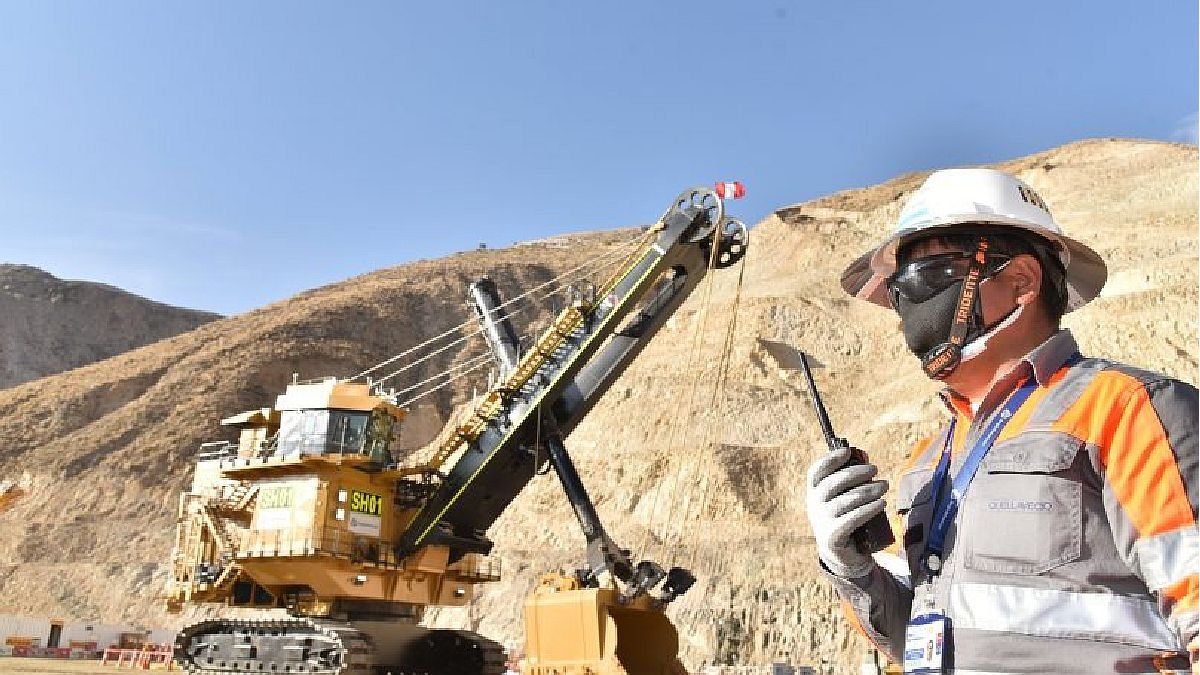Mining projects in Peru add up to at least 53,000 million dollars, almost 70% of which are to extract copper.
The last two large investments were in Quellaveco de Anglo-American and in fair minsurfor about 6,600 million dollars, and whose operations underway this year will allow the country to register a production of 3 million tons of copper in 2025, according to experts.
Peruvian production of the metal grew 7% last year to 2.3 million tons, but is still below the peak of 2.5 million tons it reached in 2019.
“Without any world-class projects on the horizon, the prospects for sustaining production are not good,” Gonzalo Tamayo, an analyst at the consulting firm Macroconsult and former Minister of Energy and Mines of Peru, told Reuters.
Mining executives and analysts met last week in Lima with warnings about the investment due to the climate of protests. The central bank projected in a recent report that mining investment would fall 0.8% this year and up to 15% in 2023 after the execution of already committed investments.
But big projects like Tia Maria, Michiquillay and Los Chancas for 6,700 million dollars in charge of Southern Copper; Trapiche de Buenaventura for 973 million dollars and La Granja de Rio Tinto for 5,000 million dollars still do not have a definite future, according to the miners.
DEMAND PRESSURE
At the mining forum, important executives highlighted the need to take advantage of the upcoming increase in global demand for copper, in the face of the development of “green technology” that can be seen in the industry and international markets.
“This puts Peru in front of a great opportunity,” BlackRock’s global head of industry and thematic investment said during the forum in a teleconference, Evy Hambro.
According to a report by the consulting firm RBC Capital Markets presented at the mining event, 12% of the potential copper projects globally are in Peru, in second place behind Chile, the world’s largest producer of the red metal.
Almost all of the Peruvian projects are in historically poor Andean areas, which voted mostly for Castillo and are protesting for greater profits from the mines.
Chile mining.jpg
Chile is the world’s largest producer of copper.
Photo: AFP
Chinese sneakers MMG Ltd it stopped its work in April after an invasion of surrounding communities. The Cuajone mine Southern Copperafter two months of paralysis, restarted its operation after an agreement with neighboring residents.
The vice president of the commercial and finance area of Las Bambas, Alvaro Ossioaffirmed that the country’s challenge is to attract capital because the “great challenge that remains for all Peruvians is to take advantage of this great opportunity.”
But not everything is pessimism. The largest gold miner in the world, Newmont Mining, announced in Lima that it is considering expanding to copper production in Peru along with gold. Its chief executive Tom Palmer said that “there is an opportunity to return one day” to the Conga project, canceled in 2011 due to opposition from nearby communities.
Conga awaits investments for 4,800 million dollars.
However, the analyst Tamayo stressed that the type and profile of the conflicts in Peru have changed because in previous years protests were unleashed to not start a project.
“Now there are protests that stop mines in full operation,” Tamayo said. “The miners feel that the State does not support them and that the State has ceased to be the arbiter in conflicts.”
By Marco Aquino for Reuters.-
Source: Ambito
David William is a talented author who has made a name for himself in the world of writing. He is a professional author who writes on a wide range of topics, from general interest to opinion news. David is currently working as a writer at 24 hours worlds where he brings his unique perspective and in-depth research to his articles, making them both informative and engaging.




